Italian Meal Courses, Menus & How to Order in Italy!
Antipasti, Primi, Secondi, Contorni, and Dolci are traditional Italian meal courses on menus in Italy. Types of dishes in each plus tips on ordering in Italy.
What comes to mind when you think of Italian food? Pizza? Spaghetti? Gelato? How about antipasti, primi, secondi, contorni, and dolci five typical courses of an authentic Italian meal? Despite the popularity of Italian food around the world, it can be jarring for tourists to face that first menu in an Italian restaurant in Italy. First, there’s the language barrier, and what are all those courses? Must one order from each course?
In short, no you do not have to order from every course on alla carta menus in Italy (first menu photo below) which offer individually priced dishes. Degustazione menus (second menu photo) however are price-fixed tasting menus with options to choose (scelta) from.
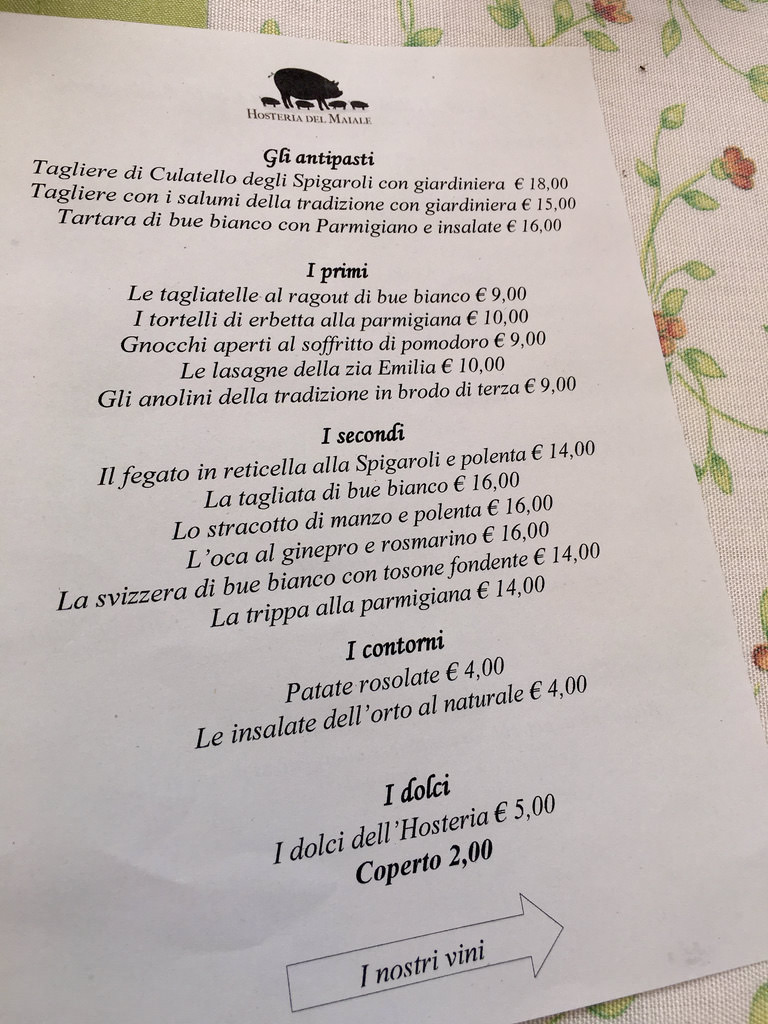 Five Courses of an Alla Carta Italian Menu in Italy
Five Courses of an Alla Carta Italian Menu in Italy
 Fixed Menu in Italy
Fixed Menu in Italy
Ordering Tip: Coperto is a traditional part of dining out in Italy. Think of it as a per person cover charge typically listed on the menu (as seen on the alla cart menu above).
Find out more: What Coperto in Italy is and the history behind it.
Italian Meal Courses
Menus in Italy are broken down into sections by course to replicate the flow of a traditional Italian meal. Typically, each course is served in the order it appears on the menu from antipasto moving on through primi, secondi, contorni, and finally dolci. Many restaurants offer additional courses including aperitivo, insalata, formaggio, frutta, caffè, digestivo, and although not officially a course, a favorite across Italy tagliere! Each course of an Italian meal is detailed below with examples, photo galleries, and curated videos.
“Knowing the courses and flow of a typical Italian meal makes eating your way across Italy every bit the foodie experience dreams are made of.”
Aperitivi
From the Latin ‘aperitivi’ meaning ‘opener’ an aperitivo (singular form) marks two occasions as a pre-dinner drink in Italy. A happy hour drink with snacks enjoyed before going to dinner, or a drink served to stimulate the appetite at the start of dinner.
Rather than list aperitivi on the menu, some restaurants in Italy offer customers a complimentary glass of Prosecco to locals as a treat before the meal. As a stand-alone happy hour drink, an aperitivo is typically a vermouth-driven cocktail like a Spritz, Americano, Negroni, or simply a glass of wine, beer, or bubbly.
Aperitivi became a tradition in Italy thanks to distiller and marketing genius Antonio Benedetto Carpano. After creating one of the first types of vermouth in Torino in 1786 Mr. Carpano claimed his mixture of muscatel, herbs, and spices stimulated the appetite and thus the aperitivo was born.
As with most of the informational videos in Italian curated here on ALOR Italy, turn closed captioning on in English to learn more about vermouth and aperitivi in Italy!
Video: Original Torinese Vermouth, How it’s Made
Next up is antipasti, the Italian course most often confused with aperitivo. Not only are they similar words in length and letters, but meeting friends for an aperitivo at a bar after work means getting snacks. It’s no wonder the two get confused.
Ordering Tip: While aperitivo is primarily about the drink, antipasto is all about food!
Antipasti
Antipasto (singular form) is the beginning of the meal. Similar to hors d’oeuvres, antipasti are small portions of delicious bites to ignite the appetite, not fill the stomach. My favorite antipasti are from Locanda in Cannubi in Barolo, Italy.
Their La Langa al piatto (the Langa on a plate) is a collection of five classic antipasti from the region. Pictured below they include vitello tonnato (veal with a tuna sauce), peperone ripieno (red peppers filled with tuna), battuta di vitello al coltello (raw veal cut by knife), acciughe al verde (anchovies in green), and finally tonno di coniglio (rabbit tuna, a cold salad of rabbit).
View this post on Instagram
A post shared by Locanda in Cannubi (@ristorantelocandaincannubi)
Italian Meal Courses Antipasto: La Langa al Piatto Antipasti from Locanda in Cannubi in Barolo, Italy.
While Locanda in Cannubi assembles the best hits of antipasti from La Langhe on one plate, many of these delicacies can be found individually across Northern, Italy the region I now call home. Here’s a quick look at a few typical antipasti dishes in Italy.
Ordering Tip: While it’s tempting to make a meal of antipasti, Italians typically have one before Primi.
Primi
Il primo (the first course) is understandably confusing for tourists. While it’s the second dish after antipasti, primi are considered the first true course of a traditional Italian meal. Primi is carb central. This is where pasta lives on an Italian menu including Risotto, Gnocchi, and soups like Ribollita.
If a single plate is what you’re after, look to primi. However, portion sizes are relatively small compared to American pasta dishes. Here’s a gallery of primi dishes I’ve enjoyed that show typical portion sizes of pasta in Italy.
Secondi
Il Secondo is the second course or the main dish of a traditional Italian meal. Secondi are typically protein-forward dishes of meat, wild game, or fish. Secondi are the most expensive and largest courses on alla carta menus. Fortunate enough to be invited to someone’s home for dinner in Italy? Dress nice and expect a fuss unless you are specifically told dinner is informal. Save your appetite for the secondi as this is where your host is likely to put most of their time and effort into the meal.
While carne means meat and pesce means fish in Italian, it’s helpful when reading a menu in Italy to know at least a few types of meat and fish by name. Here are 30 common meat and fish names on menus across Italy.
English List of Italian Meat & Fish Names on Italian Menus
- Acciughe are anchovies a salt-preserved fish common in Northern Italian.
- Anatra is duck.
- Bottarga is salt-cured fish roe that is compressed and shaved or sliced onto eggs, vegetables, and pasta and it’s delicious!
- Branzino is seabass also called Spigola.
- Calamaro is squid.
- Capasante are sea scallops.
- Cervo is venison.
- Cinghiale is wild boar, popular on menus in Tuscany.
- Cozze are mussels.
- Frattaglie is offal, the entrails and internal organs of animals including cows, pigs, and chickens.
- Gambero are shrimp.
- Guanciale is cured pork jowl, the name comes from guancia the Italian word for ‘cheek’ something Italians really do pinch!
- Lardo is cured pork fat. While that might not sound delicious it is when sliced thin on melon as seen in the antipasto gallery above.
- Maiale means pork.
- Merluzzo is Altantic cod.
- Manzo is beef, mucca means cow, but when it comes to Italian cheese look for latte vaccino because vacca also means cow.
- Ostrica is oyster and for a dozen the plural form is ostriche!
- Pancetta is the bacon of Italy
- Pecora is sheep in Italian. Sheep’s milk by the way makes for some of the best cheese in Italy!
- Pesce spada is swordfish. Pesce spada affumicato (smoked swordfish) is one of my favorite Antipasti in Italy!
- Polpo in Italy means Octopus (both the animal and the meat) and is Paolo’s all-time favorite. If Polpo is on the menu, it’s soon on his plate.
- Prosciutto crudo is raw air-cured ham while Prosciutto cotto is cooked ham a popular pizza topping in Italy.
- Pollo is chicken.
- Salsicca means sausage.
- Tacchino is turkey.
- Vitello is veal.
- Seppia is cuttlefish a common seafood in Venice.
- Tonno means tuna both in the preserved canned form and in steak form (bistecca di tonno).
- Trota is trout and similar to tuna represents both the conserved and fresh forms.
- Last but not least is vongole which are clams, often seen as Spaghetti alle vongole!
Funny enough I’ve seen “oven-roasted kid” twice on English language menus in Italy. They mean lamb! Italian menus translated into English in Italy are frequently… just a bit off. Something that’s sure to make you laugh and put you at ease while ordering in Italy.
Ordering Tip: If vegetables are not listed with the secondi dish description consider ordering a contorno.
Contorni
A friend visiting Italy commented “Italians never eat vegetables! It’s all pasta, meats, and cheese!” While that’s not true, the confusion is understandable. Frequently in Italy, savory side dishes and vegetables are a separate course on the menu called Il Contorno or Contorni.
There are countless vegetable side dishes equally as famous as their pasta counterparts across Italy. In Rome, there is Carciofi alla Giudia (Roman Jewish-style fried artichokes). Florence claims Panzanella. A salad that makes use of day-old bread and fresh summer tomatoes. While in Sicily and Naples Melanzane alla Parmigiana (Eggplant Parmigiana) is the star of the show. In the Piedmont region, vegetables take center stage with Bagna Cauda, a recipe I recently shared with Live in Italy Magazine.
Similar to secondi, knowing a few vegetable terms in Italian will go a long way to making menus in Italy easier to read. Even if you only watch the following Italian vegetables video a few times, I bet a few of your favorite vegetable names stick for your trip to Italy!
Video: Italian Meal Courses: Contorni Italian Vegetable Names
Ordering Tip: While contorni are sometimes listed as a seperate course on menus in Italy, they are often served alongside the main secondi dish.
Formaggi
Italy is home to Chilometro Zero food (meaning no distance.) This Italian food philosophy is the belief that the best quality products come from as close as possible ensuring sustainable freshness, seasonality, and biodiversity. In Italy, the formaggi (cheeses) course is dedicated to regional, seasonally produced cheeses typically made less than a kilometer from where they are served. Cheese plates are perhaps the best example of Kilometer Zero food in Italy.
Ordering Tip: Fan of salami, charcuterie, and cheese? Look for a tagliere misto (mixed board) on menus in Italy. Then sit back and enjoy, chances are you’re in for a treat!
Taglieri
While technically not an Italian meal course many restaurants in Italy list tagliere as an option on the menu. Trust me, if you like meats and cheeses you want this! Tagliere literally means cutting board in Italian. Italian restaurants use cutting boards as serving boards and pile them high with the best local meats and cheeses they can find or in many cases make in-house. Want to see what I’m drooling about as I type? Here is a tagliere gallery full of all-time favorite tagliere I’ve had the pleasure of sharing in Italy.
Insalata & Frutta
Some restaurants list insalata (salad) and frutta (fruit) as separate courses. What’s funny for Americans is that salads are served after the main dish and side dishes, not at the start of the meal in Italy. Frutta is sometimes listed with formaggio, but always served before Dolci. If the brevity of this section description sticks out to you, that’s because these are not the most popular Italian meal courses and many restaurants in Italy omit them.
Dolci
Although sorbetto (sorbet) and gelato (ice cream) are almost always included in the dolci (desserts) course on menus in Italy, each region of Italy also has its own regional desserts. Venice is home to Tiramisu while the Piedmont region is famous for chocolate and panna cotta (sweetened cream thickened with gelatin.)
Yet, no region of Italy seems to love super sweet desserts more than Sicily. There’s Cannolo (fried wafers rolled and filled with fresh ricotta) Brioche con gelato (Brioche with Ice Cream) and the toothachingly sweet Cassata. Arguably Sicily’s most famous dessert, Cassata is a small light green liqueur-drenched sponge cake with sweetened ricotta, fruit preserves, and a marzipan shell decorated with candied fruit (pictured below).
 Cassata and Cannolo in Sicily
Cassata and Cannolo in Sicily
Digestivi & Il Caffè
At the end of every meal in Italy after all the plates are swept away, the waiter or host will ask “Caffè?” Italians really love coffee and often take an espresso after lunch or dinner, no matter the time. Surprising given dinner hour doesn’t really start in Italy until after 8:00! While Italians swear they have no trouble sleeping after a post-dinner espresso unaccustomed tourists who want a good night’s rest might instead opt for a digestivo.
Digestivi means digestive. In Italy, a digestivo is said to aid digestion no doubt needed after so many courses! Options are typically small pours of regional amari (Italian bitters). Italian bitters are grape brandy infused with herbs, flowers, roots, citrus, or spices that are sweetened with sugar syrup and aged. The herbal nose and near medicinal taste is said to cure an upset stomach by accelerating digestion.
Be it Fernet Branca in Milan, Limoncello in Amalfi, Grappa in Piedmont, or Génépi here in the Italian Alps, each region of Italy has its own digestivo tradition.
 Italian Meal Courses: Berta Digestivo Museum
Italian Meal Courses: Berta Digestivo Museum
Want the best of both after-dinner drink worlds? Try a Caffe Correcto as seen in this video clip with Lidia Bastianich and her Nonna!
Italian Meal Courses: Digestivo Caffee Corretto
The backbone of Italian culinary tradition dates back to Ancient Roman times when high-quality food cooked in abundance indicated success. Today the best way to experience a modern Italian feast as a tourist is to visit an Agriturismo in Italy where quality and quantity are both in abundance.
One of the most enjoyable parts of eating in Italy is the diversity of dishes unique to each region. Wherever you are eating rest assured, ordering nothing more than a single plate from an alla carta menu is perfectly acceptable if that’s all the appetite or budget you have. Plus, tipping in Italy is not expected. So larger orders do not equal larger wages for waiters. Armed with these facts and an understanding of Italian meal courses means leaving ordering anxiety at home.
Follow ALOR Italy for a little La Dolce Vita from Italy

Author Brandy Shearer is an American Italian citizen currently living in the Italian Alps who has spent the last decade eating her way across Italy with her Italian American Husband Paolo Ferraris.
References

 Assorted Salatini
Assorted Salatini Vitello Tonnato
Vitello Tonnato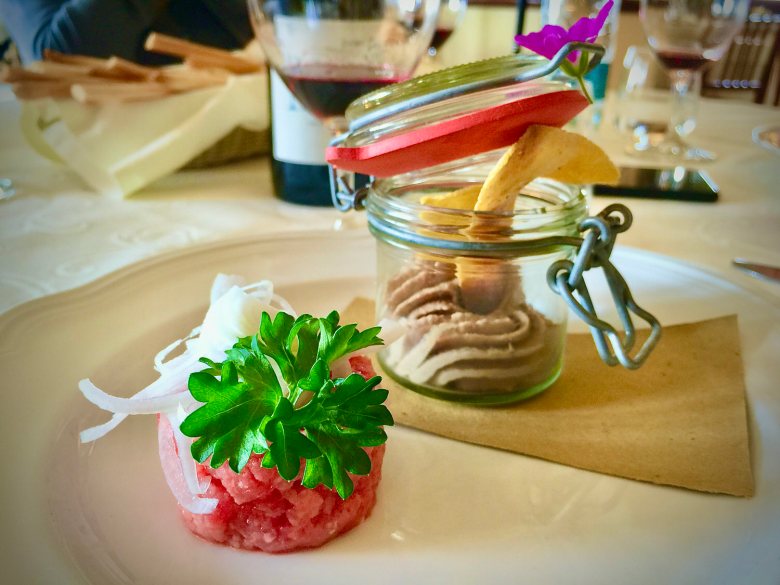 Battute di Fassona & Fegato
Battute di Fassona & Fegato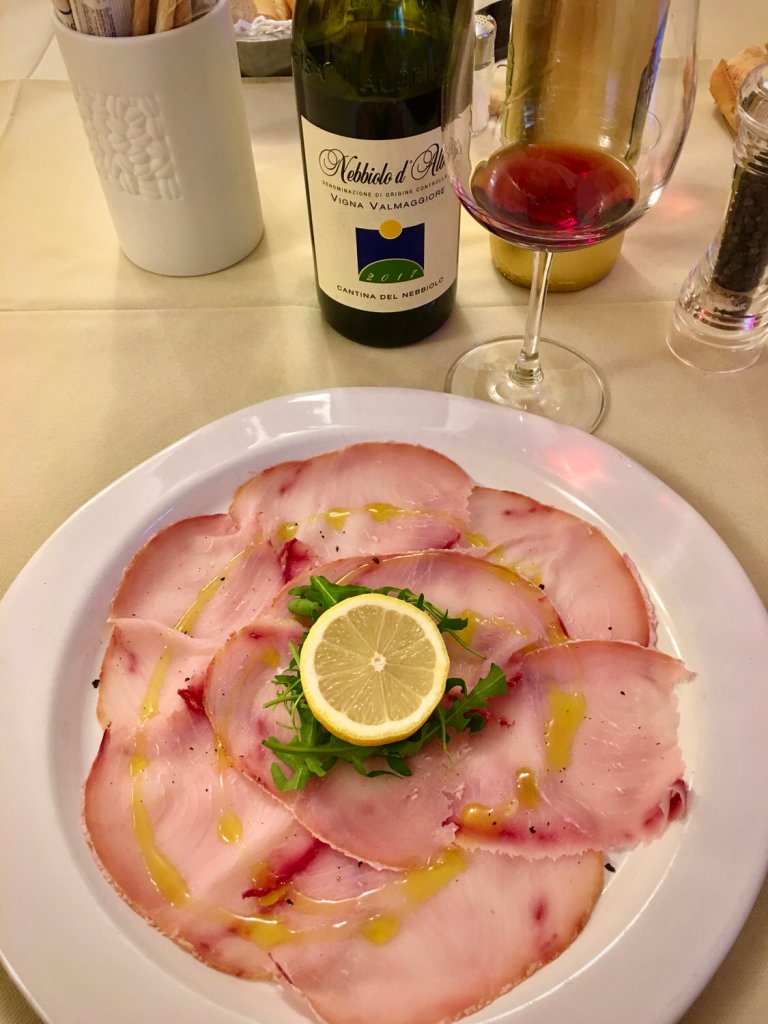 Pesce Spada Affumicato
Pesce Spada Affumicato Beef Carpaccio
Beef Carpaccio Crostini
Crostini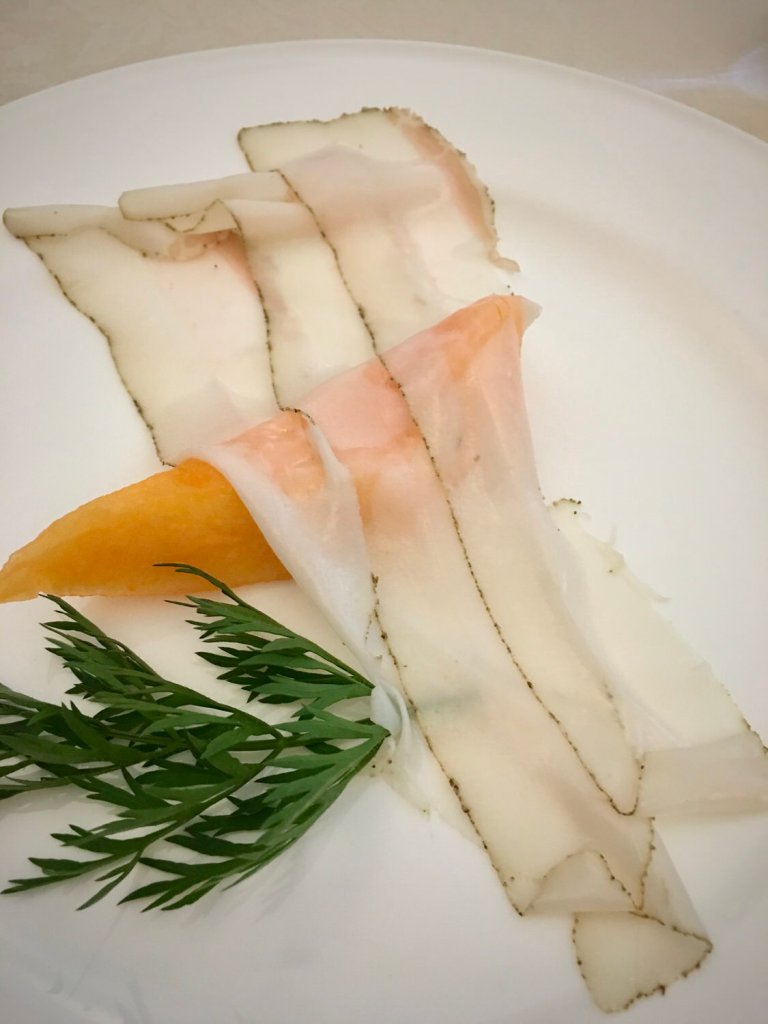 Lardo e Melone
Lardo e Melone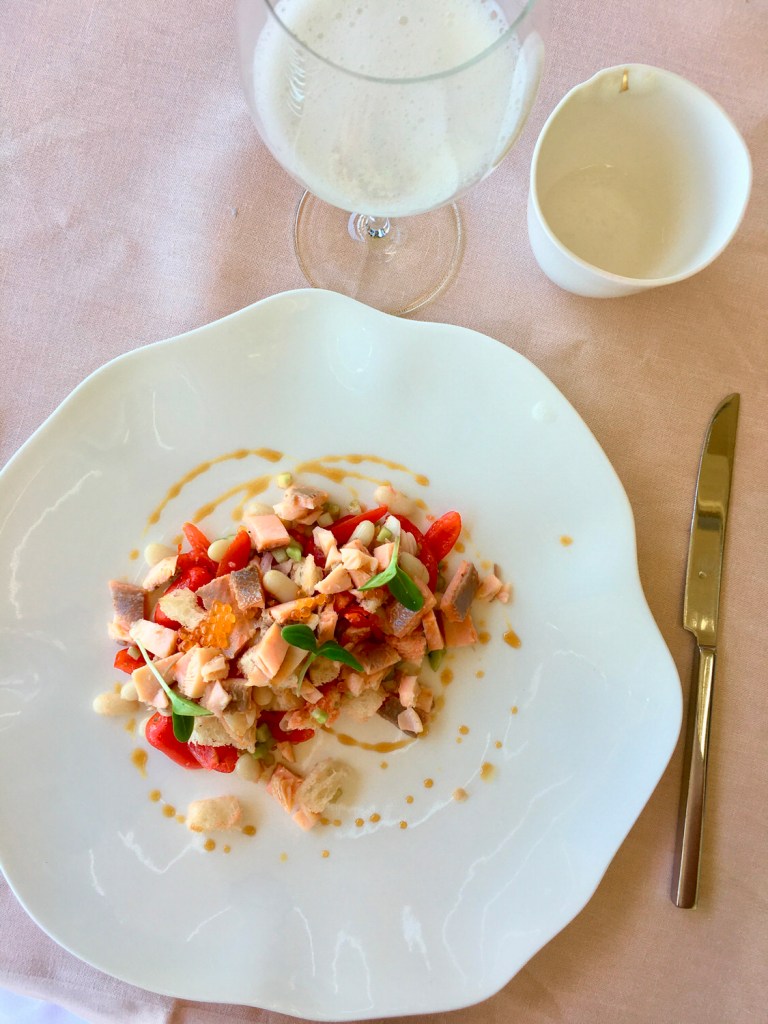 Smoked Trout Panzanella at Salis Ristorante in Valdobbiadene, Italy
Smoked Trout Panzanella at Salis Ristorante in Valdobbiadene, Italy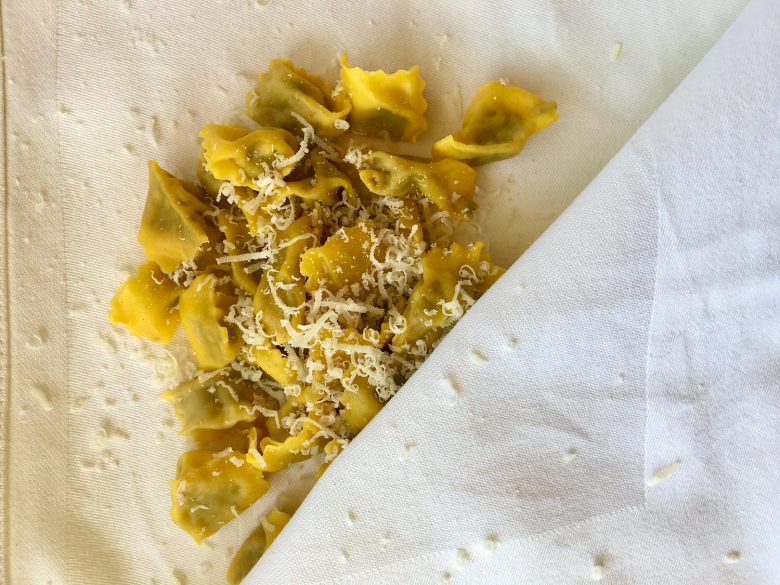 Agnolotti del Plin Traditionally Served in a Napkin Without Sauce at Locanda in Cannubi
Agnolotti del Plin Traditionally Served in a Napkin Without Sauce at Locanda in Cannubi Gnocchi with Saffron Sauce & Pistachio
Gnocchi with Saffron Sauce & Pistachio Busiate Pasta
Busiate Pasta Primi at Capper o Bistrot in Corsica
Primi at Capper o Bistrot in Corsica Parmigiana and Herb Tortelli
Parmigiana and Herb Tortelli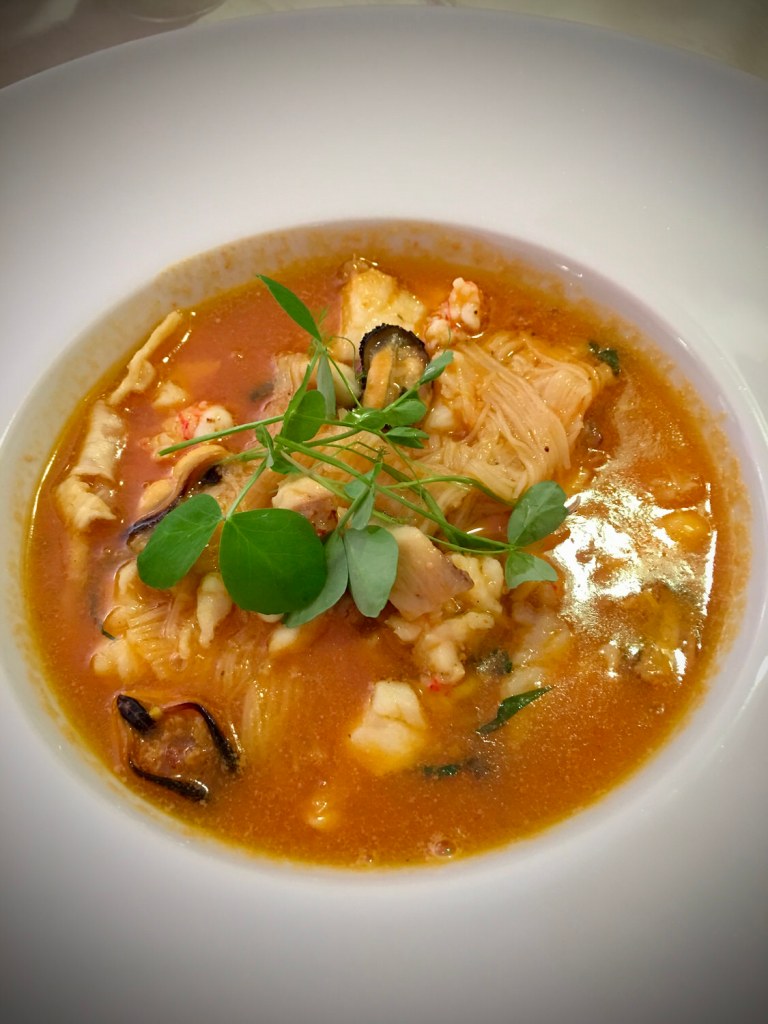 Su Filindeu World’s Thinnest pasta
Su Filindeu World’s Thinnest pasta Tajarin With Mushrooms
Tajarin With Mushrooms Secondi of Langostinos at home
Secondi of Langostinos at home Whole Roasted Branzino with Tomatoes, Potatoes, Olives and Capers
Whole Roasted Branzino with Tomatoes, Potatoes, Olives and Capers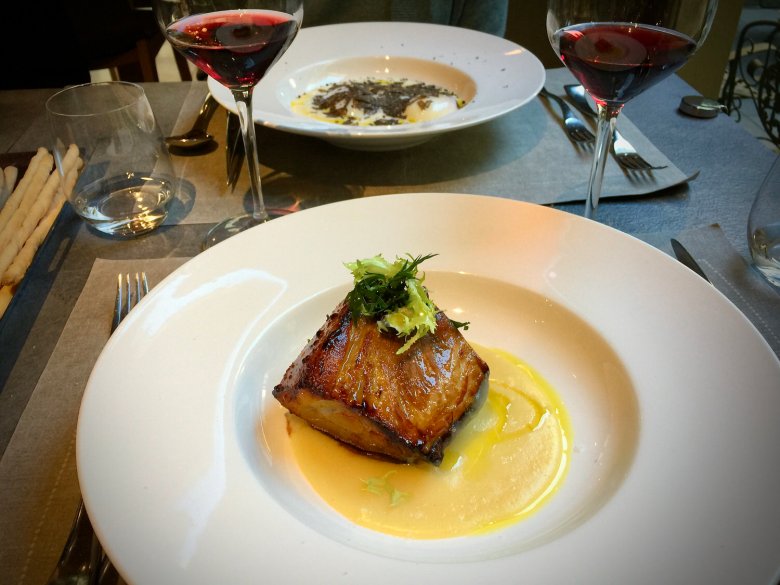 Ossobuco with Potato Puree
Ossobuco with Potato Puree Involtini at Locanda in Cannubi
Involtini at Locanda in Cannubi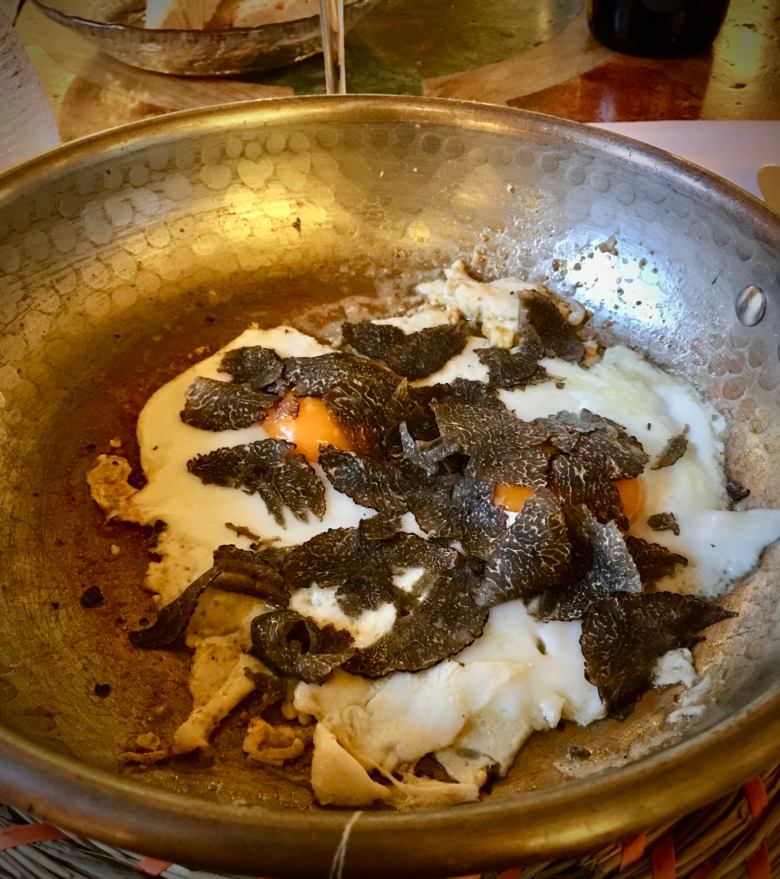 Fried Egg With Shaved Truffles
Fried Egg With Shaved Truffles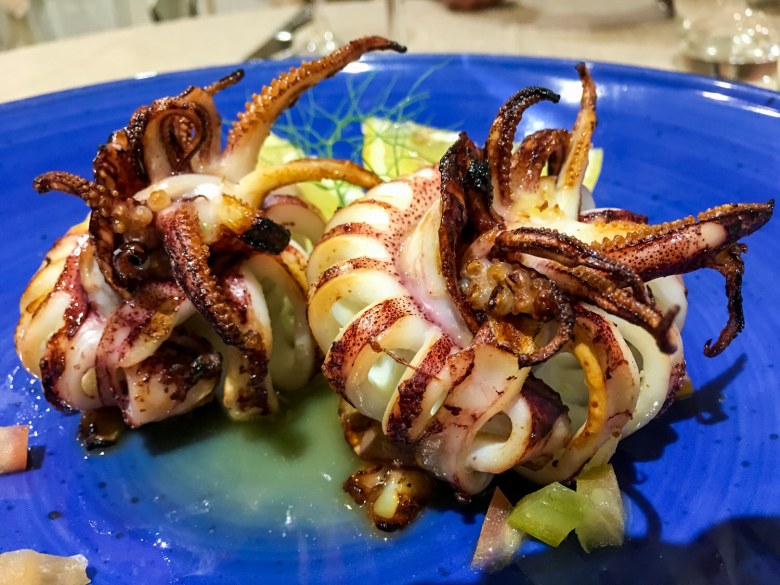 Grilled Squid
Grilled Squid Boar Ragu With Polento in Tuscany
Boar Ragu With Polento in Tuscany Cheese Plate in Catania Sicily
Cheese Plate in Catania Sicily Rosso di Langa Cheese from Piedmont Region
Rosso di Langa Cheese from Piedmont Region La Tur Cheese from Piedmont Region
La Tur Cheese from Piedmont Region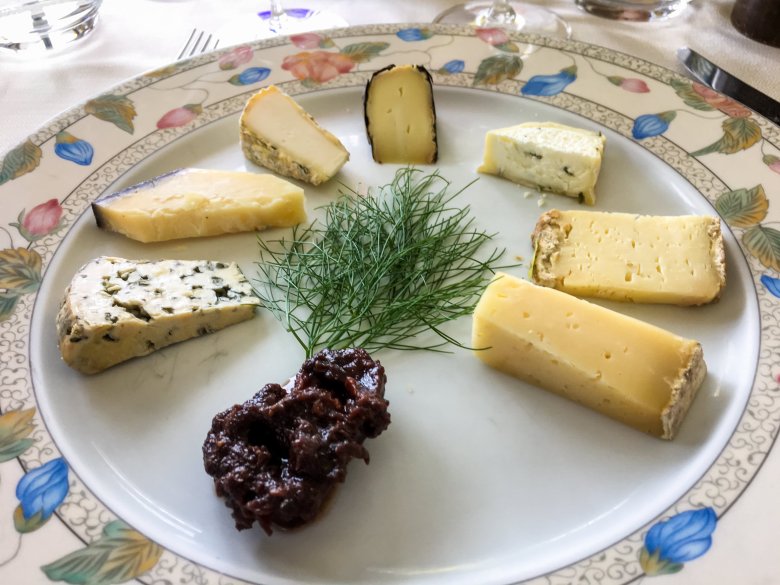 Formaggi (Cheese Plate)
Formaggi (Cheese Plate) Formaggio Plate in Catania
Formaggio Plate in Catania Over the top decadance charcuterie and cheese platter at Al Prosecco
Over the top decadance charcuterie and cheese platter at Al Prosecco  Charcuterie & Cheese plater in the Italian Alps post hike
Charcuterie & Cheese plater in the Italian Alps post hike Cheese & Charcuterie Board at Majer Venezia Cantinetta
Cheese & Charcuterie Board at Majer Venezia Cantinetta  Naturally fermented Prosecco from Barichel in the Valdobbiadene region with house-made salami, mortadella, pickled vegetables and local cheese platter at Estro Vino è Cucina.
Naturally fermented Prosecco from Barichel in the Valdobbiadene region with house-made salami, mortadella, pickled vegetables and local cheese platter at Estro Vino è Cucina. Cheese and Charcuterie at Al Boeuch
Cheese and Charcuterie at Al Boeuch 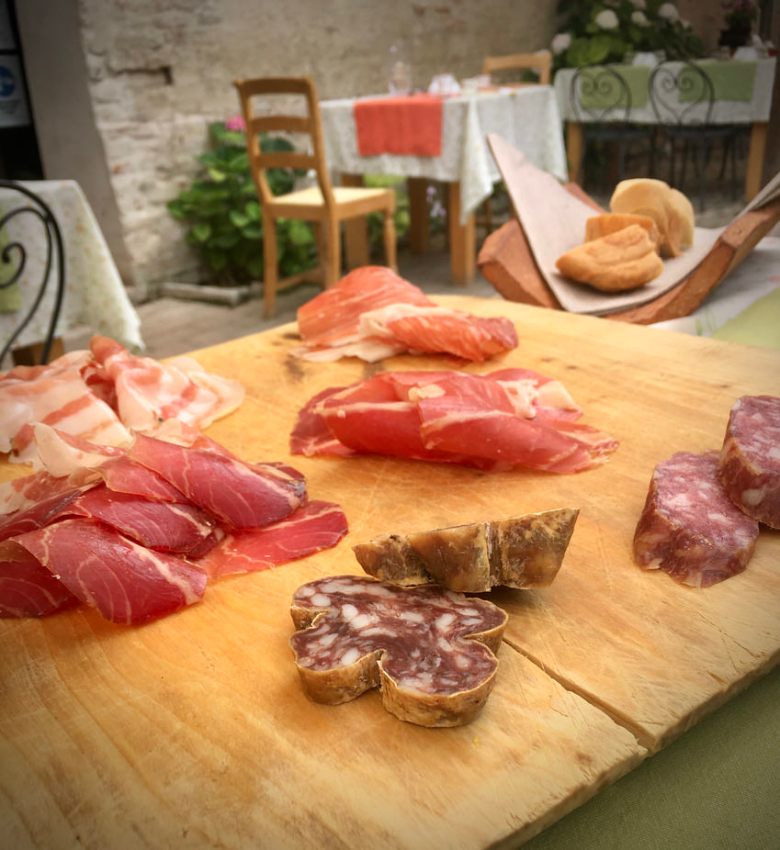 Tagliere of Culatello di Zibello
Tagliere of Culatello di Zibello Tagliere in Taormina, Sicily
Tagliere in Taormina, Sicily Tagliere in Ragusa, Sicily
Tagliere in Ragusa, Sicily Tagliere Misto in Siracusa
Tagliere Misto in Siracusa Tagliere Misto in Siracusa
Tagliere Misto in Siracusa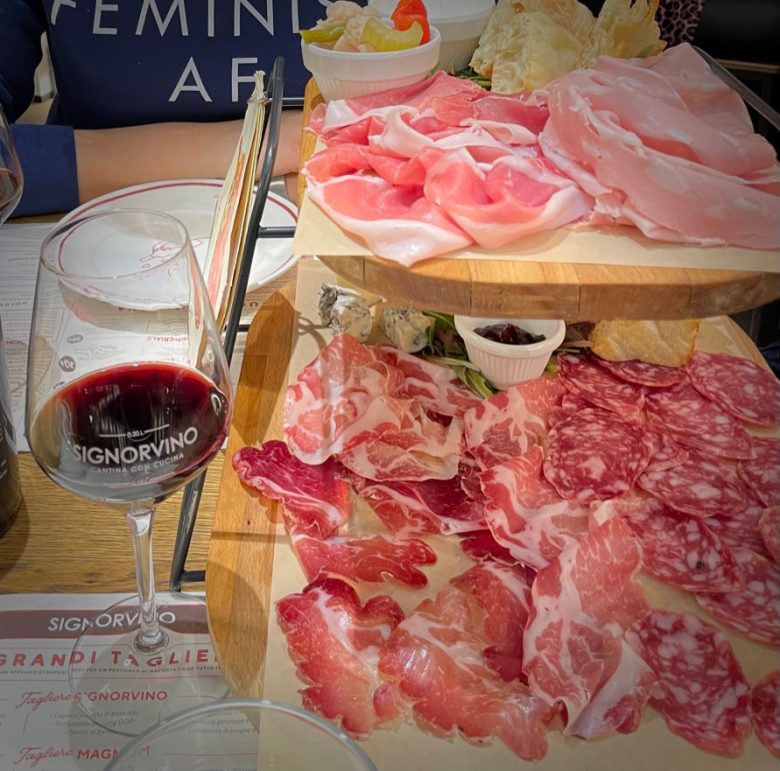 Tagliere at Signor Vino in Torino
Tagliere at Signor Vino in Torino